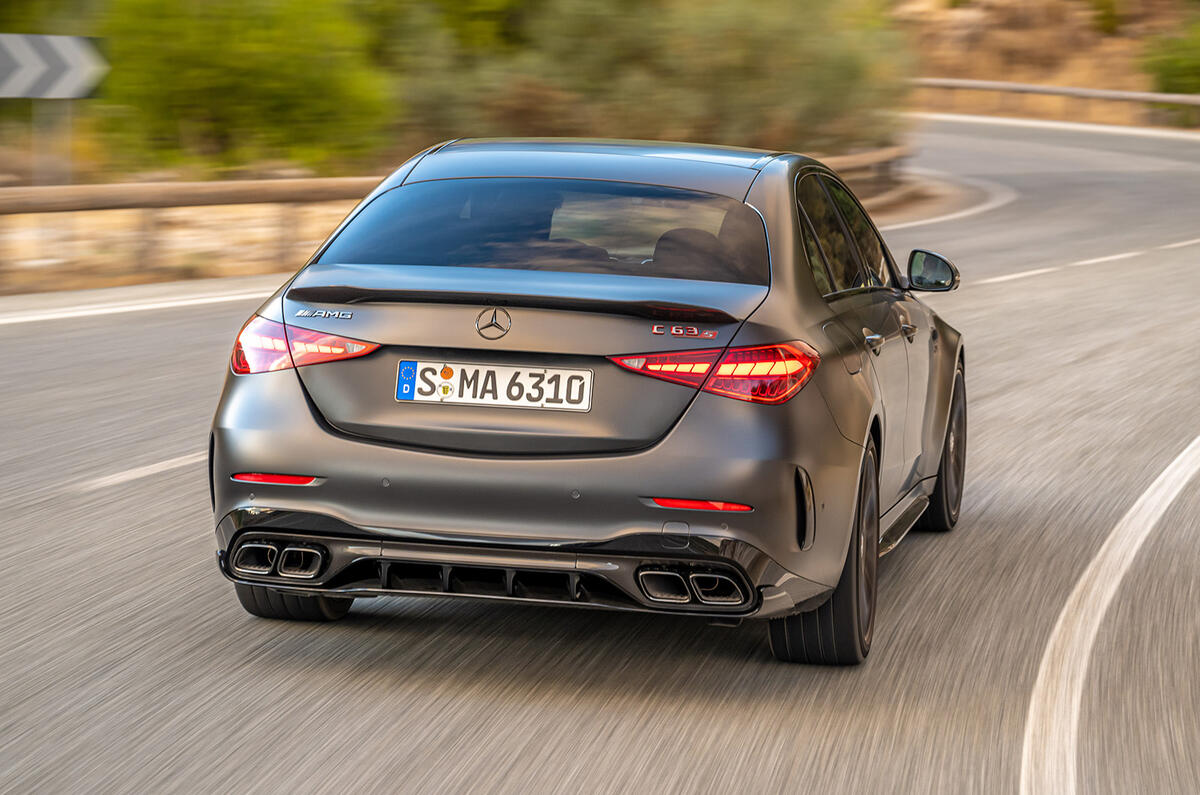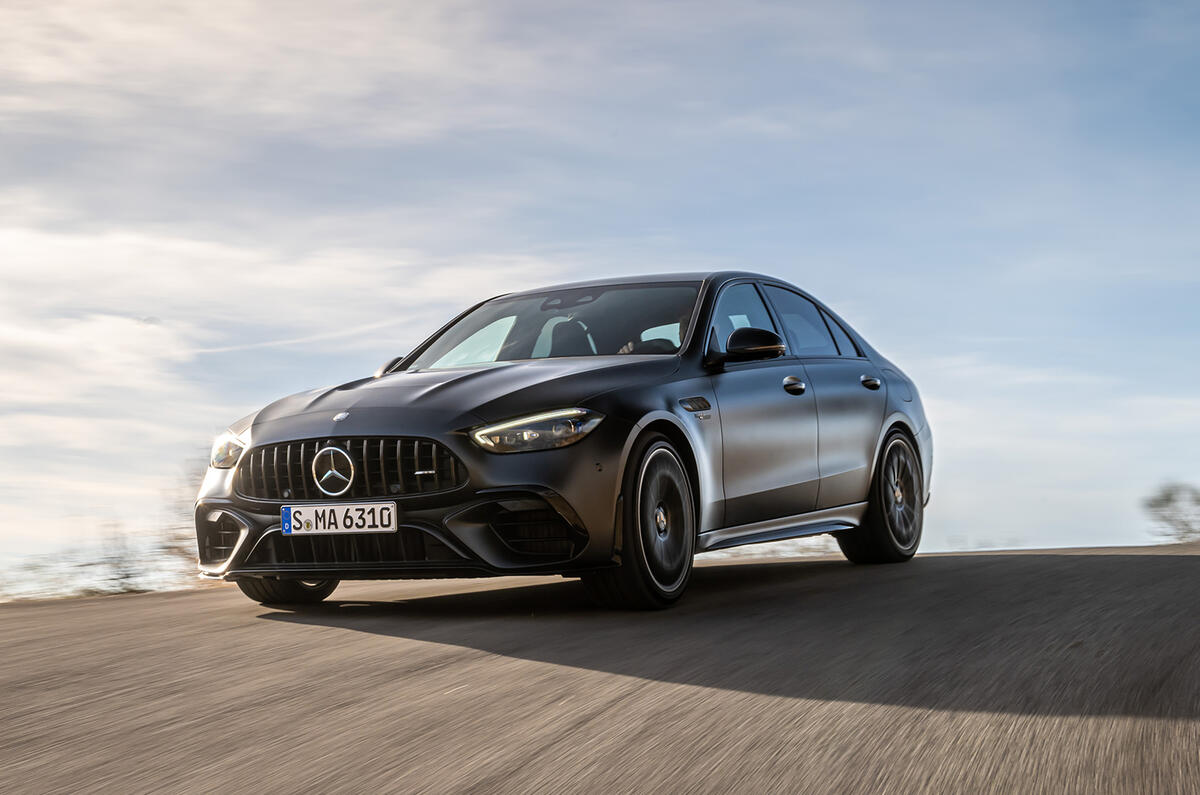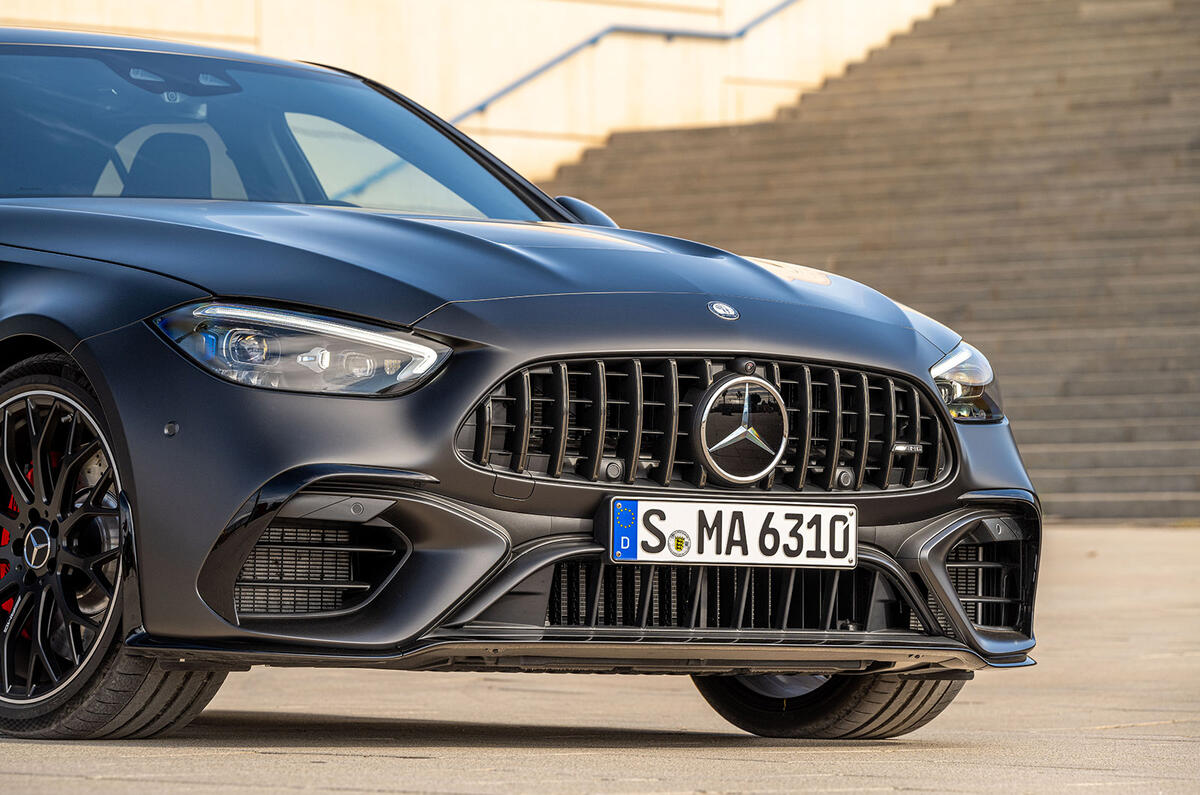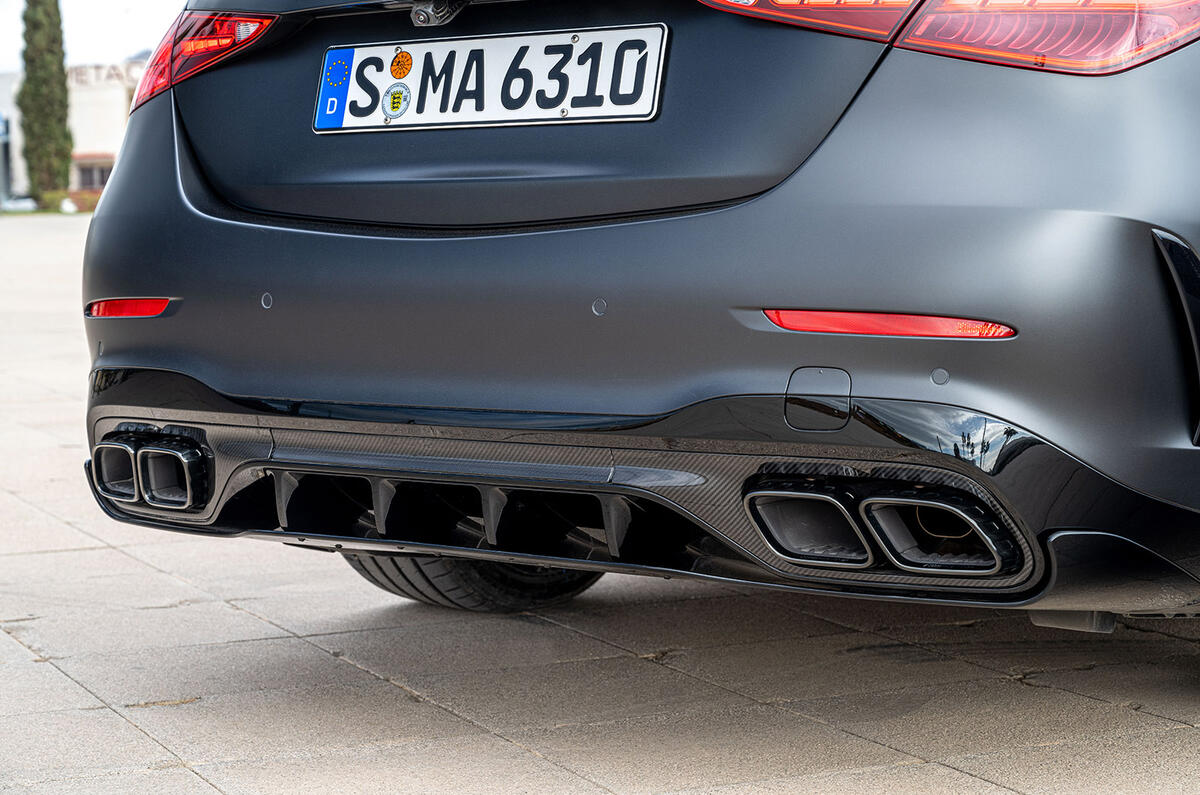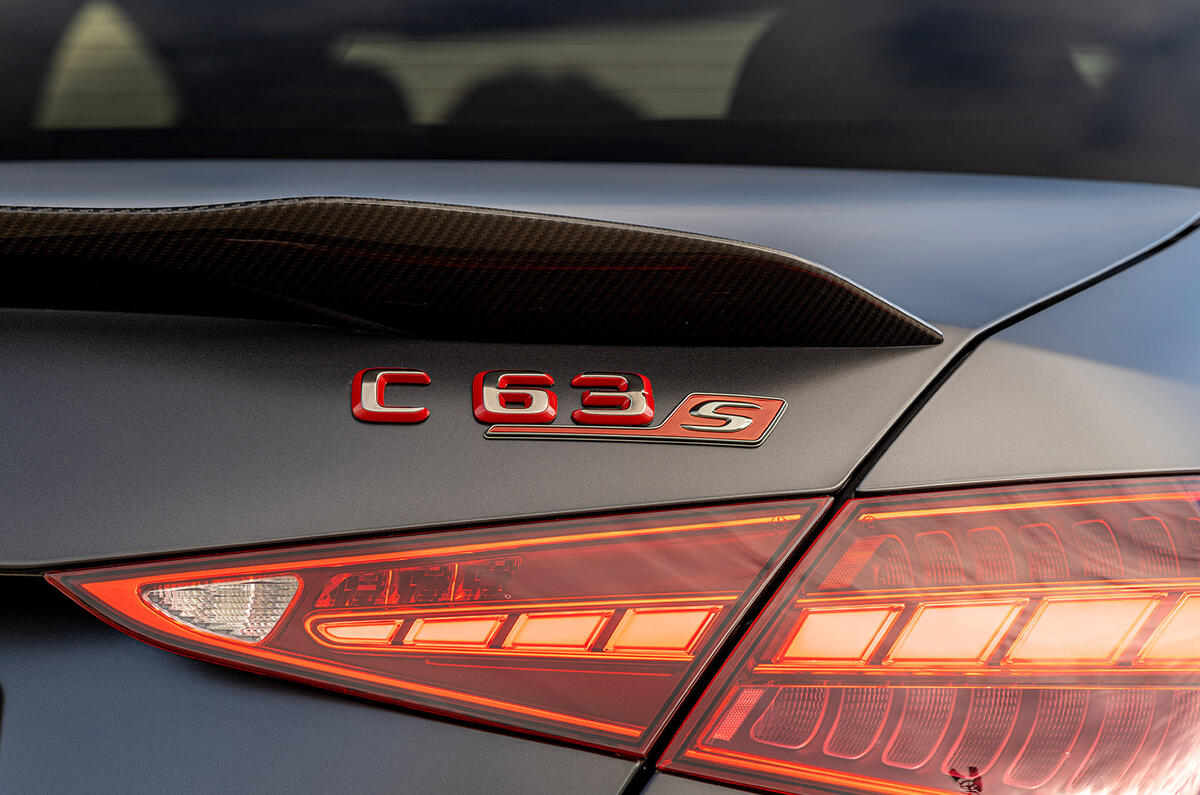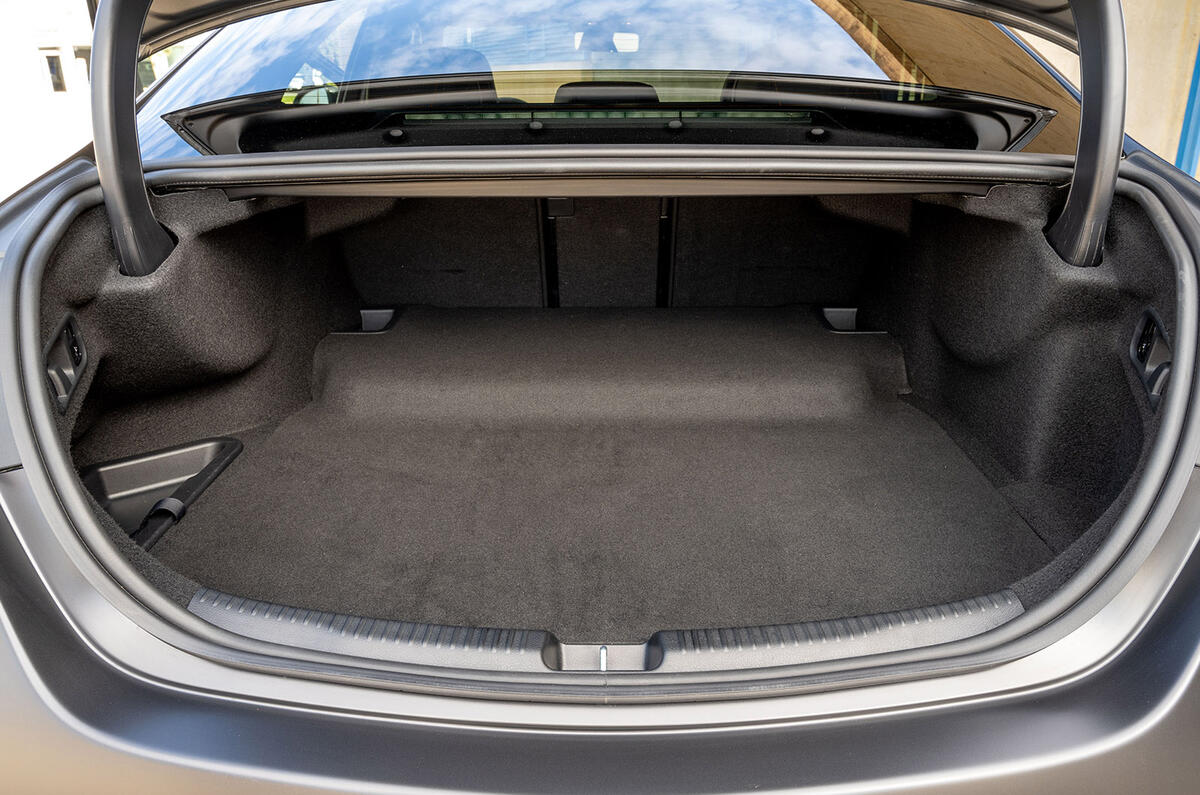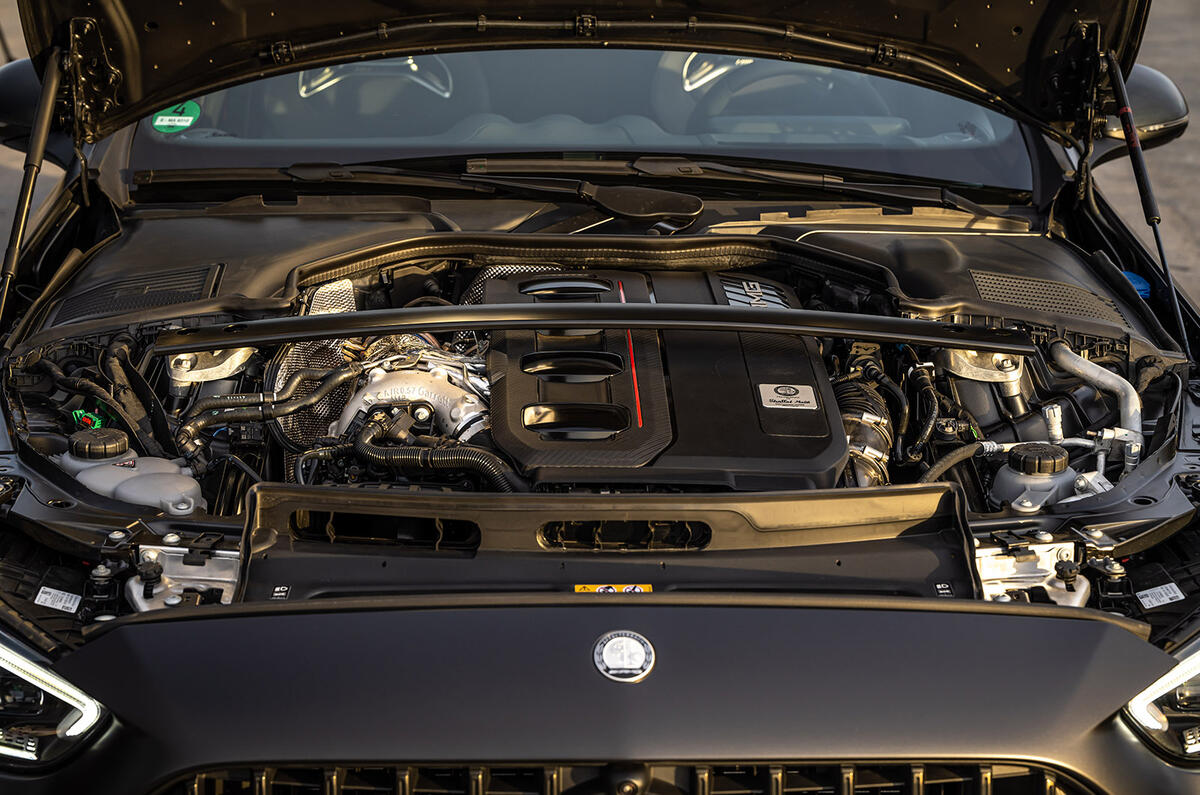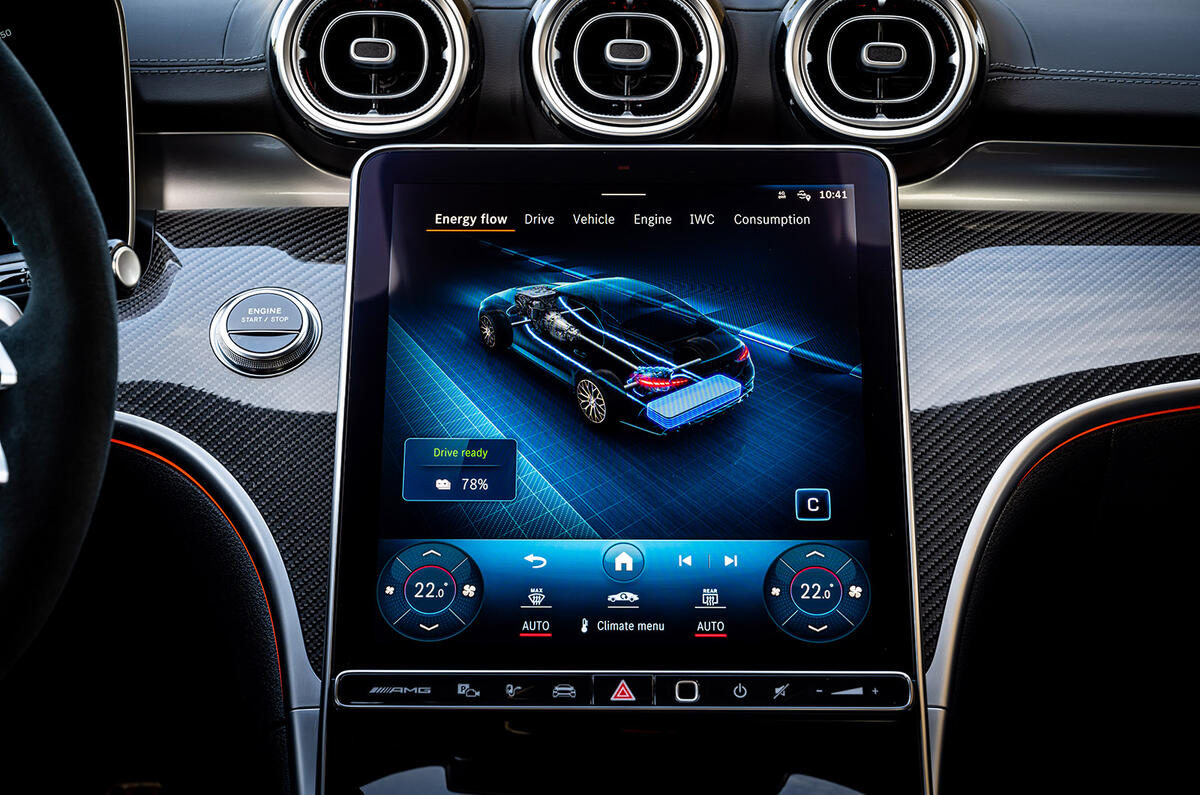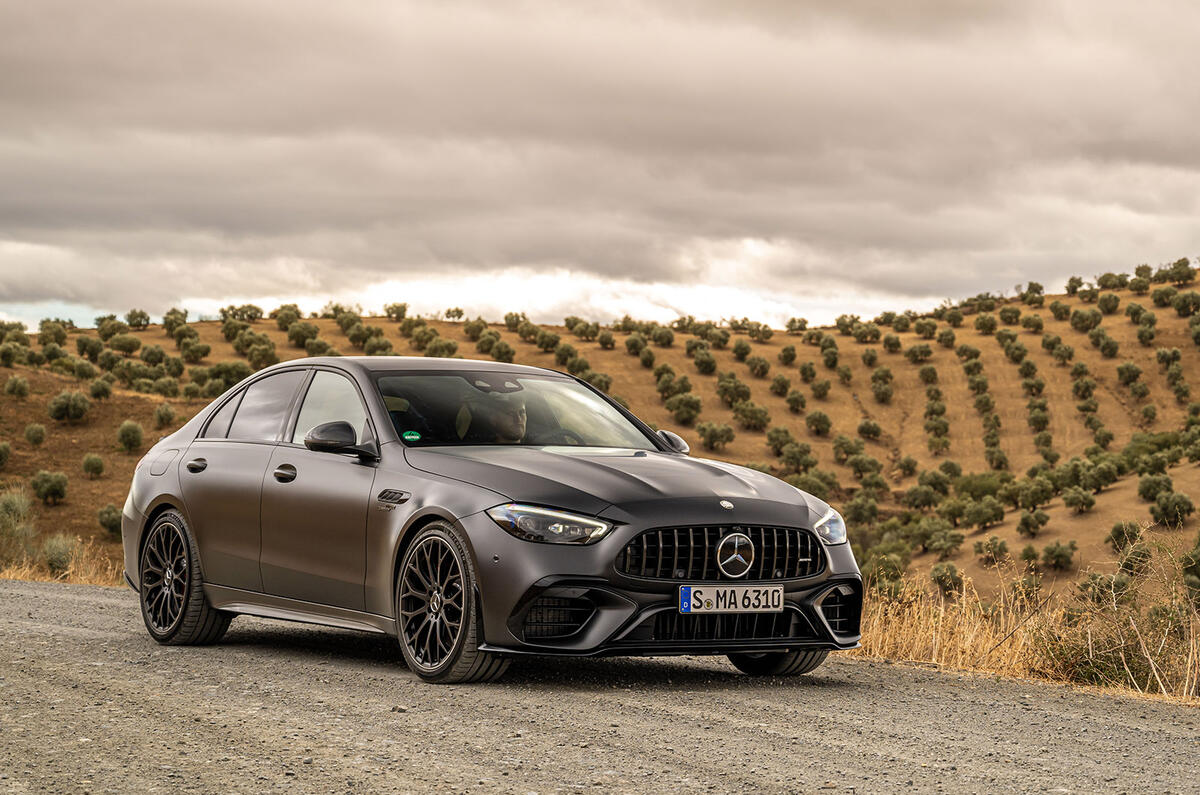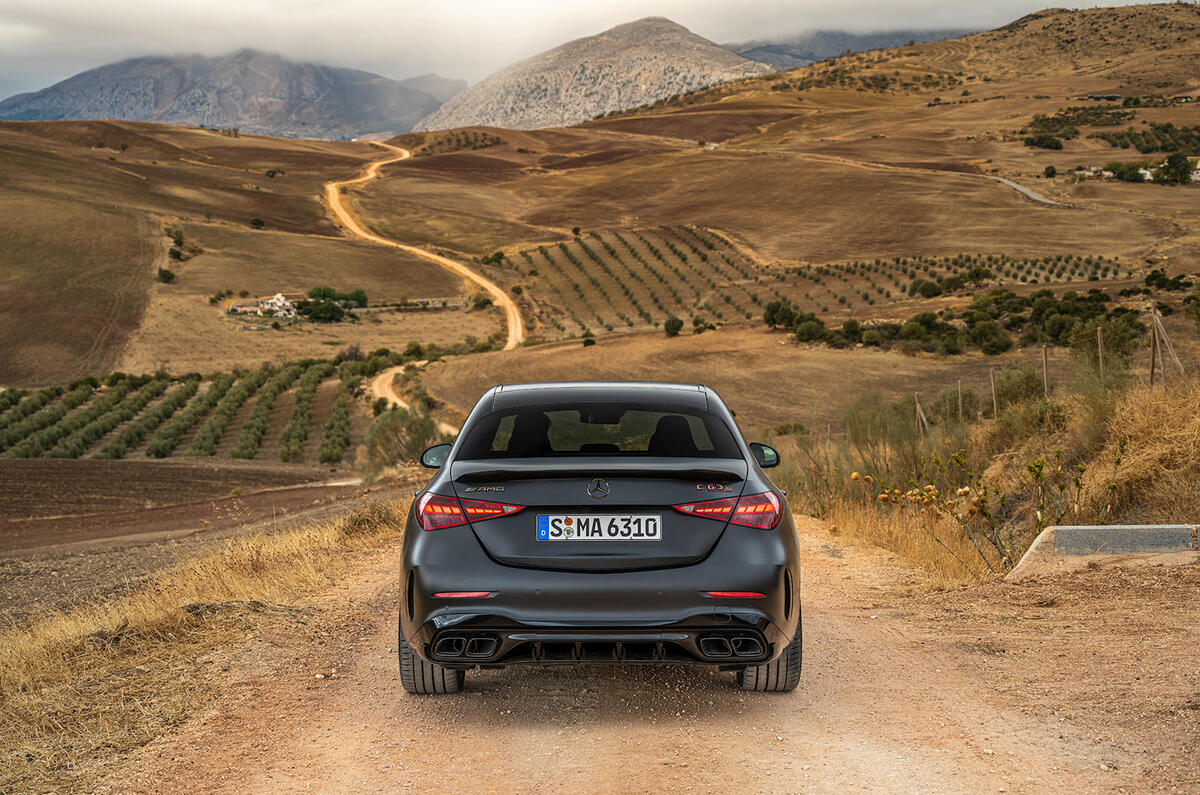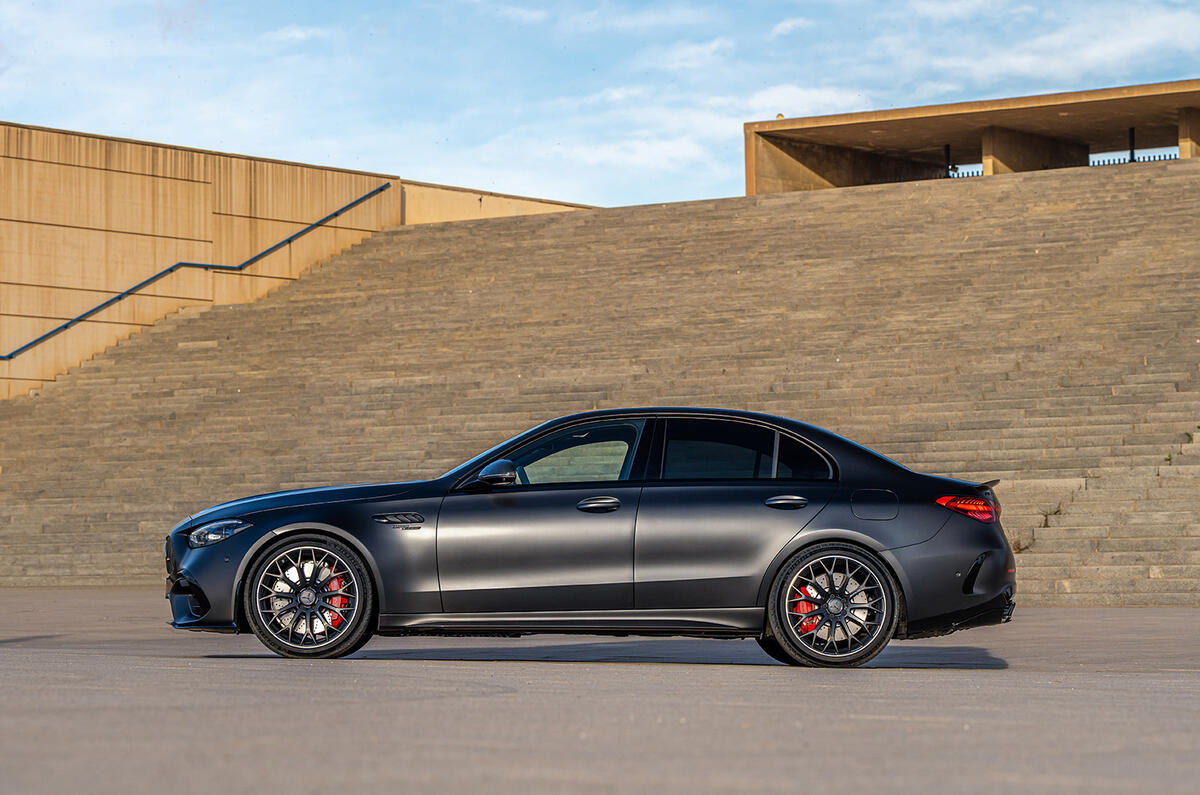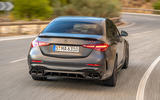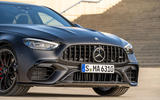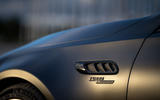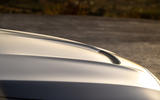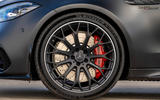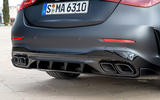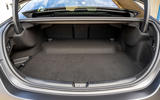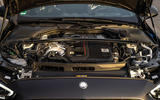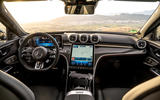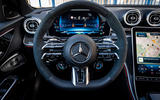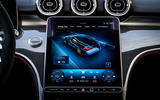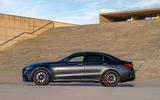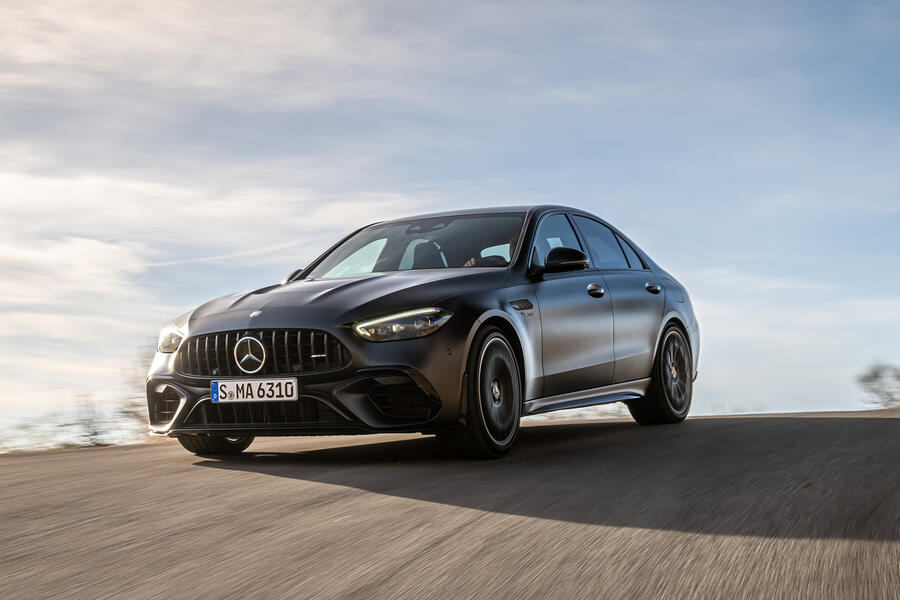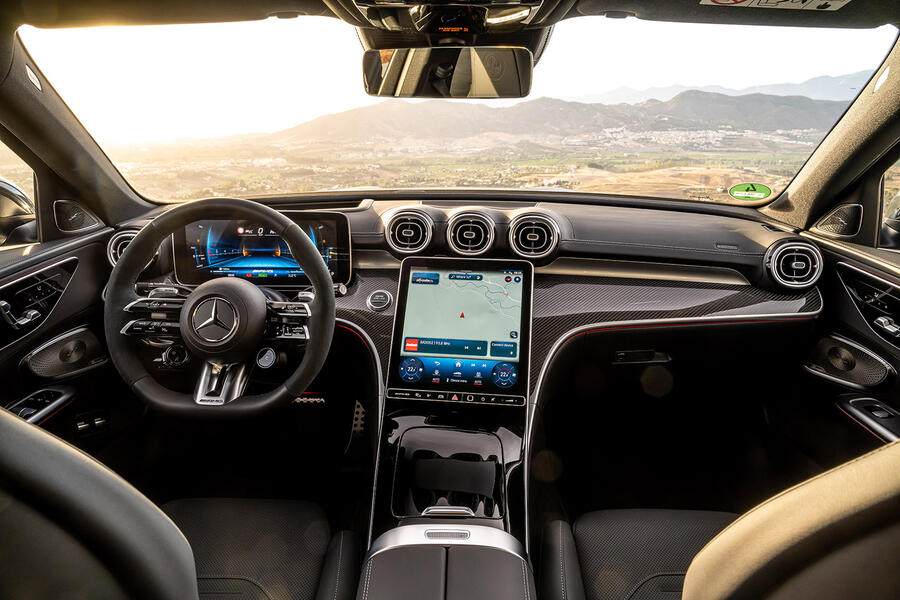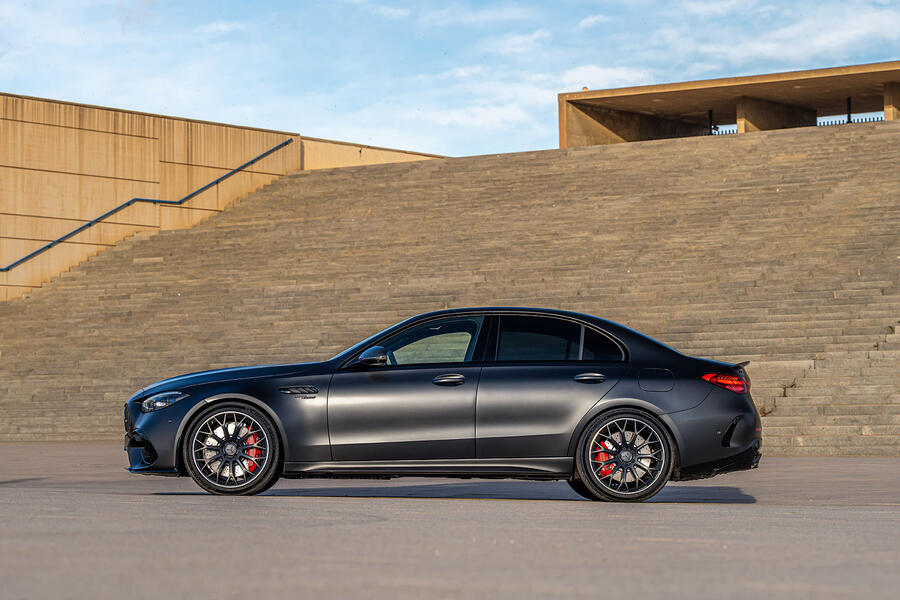For 25 years, Mercedes-AMG has used a V8 engine to define the unique appeal of its ‘super’ C-Class. The very first V8-powered one, the W202-generation C43 AMG, emerged just as Mercedes’ then-parent DaimlerChrysler was buying control of what would become its in-house performance brand right at the end of 1997. It became the very first AMG model to be built on one of Mercedes’ own production lines.
If not for the V8 C-Class, then, perhaps AMG might not have become the success it is today. But, like it or not, another page in the AMG development story is now being turned. The V8 C-Class is dead – and its usurper is the new four-cylinder Mercedes-AMG C63 S E Performance.
No longer will the appeal of this most amusingly over-endowed of compact saloons be defined by the not so compact eight-cylinder combustion engine under its bonnet. We can’t know for sure, but perhaps the Mercedes management board decided that a C-Class like that might very quickly begin to look like a damning anachronism. If not, it would certainly become an emissions-related balance sheet liability. With its bigger thunder saloons, AMG can probably afford to keep its V8s, at least for now, and simply to add hybridisation, and crank up price and profit margin accordingly, but evidently the C63 sells that little bit too strongly to make the numbers add up in quite the same way.




